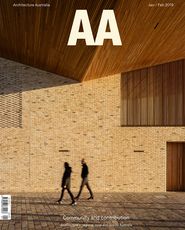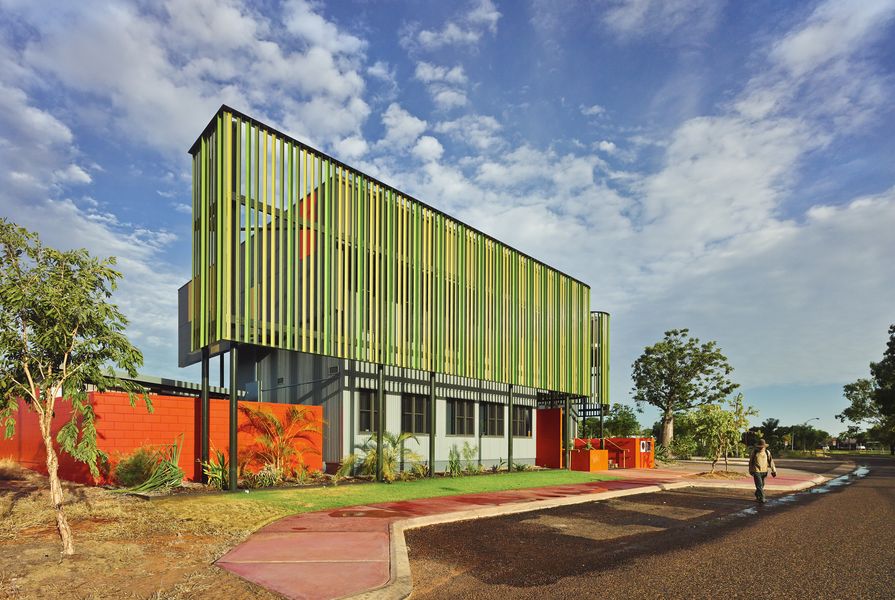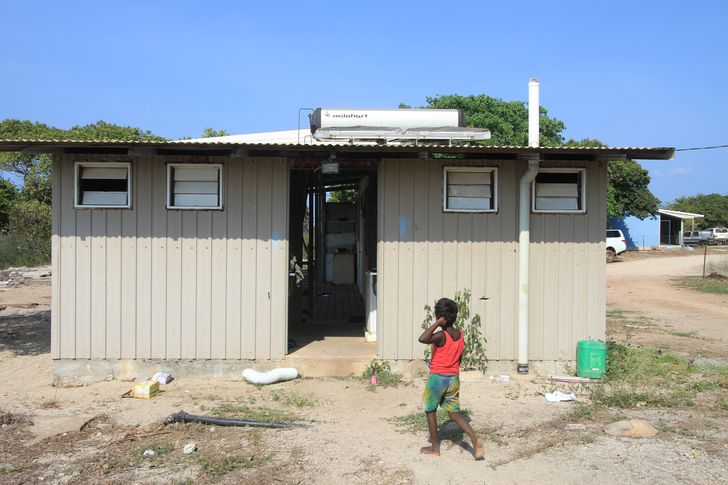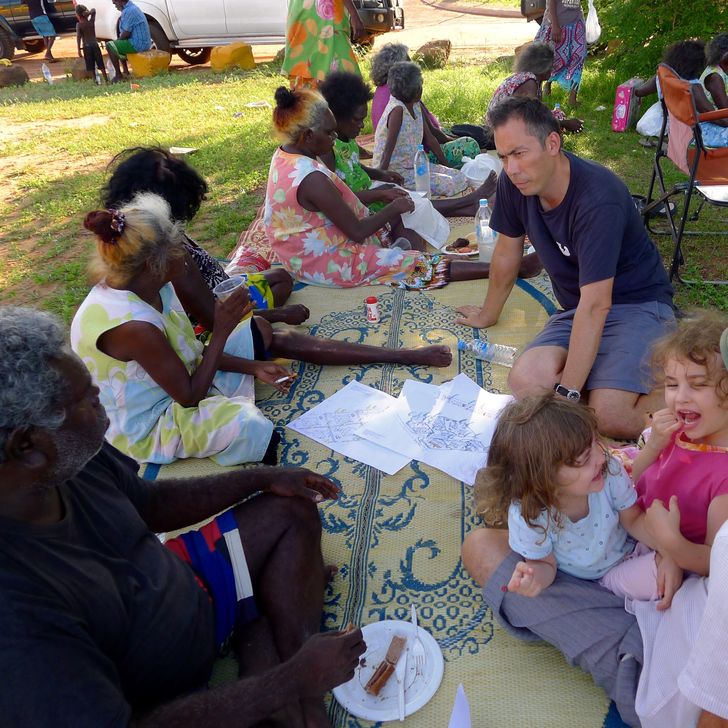Just over ten years ago, at the height of the resources boom in Western Australia, CODA studio co-founder Emma Williamson and I started to work regionally and remotely across Western Australia. Our work focused on two areas – small community and health projects and the development of state government-sponsored design guides and handbooks. These handbooks aimed to identify and retain the character of townships, settlements and outstations in the face of the overwhelming onslaught of development that resulted from the resources boom. Through this work we began relationships with Indigenous organizations and communities, working collaboratively to deliver projects ranging from land subdivision to community buildings, offices and health clinics.
Since then we have worked with four different Indigenous communities in Queensland, Western Australia and the Northern Territory, each within two kilometres of a major tourism destination. Incredibly, these “one-mile” communities are without access to running scheme water, sewerage treatment or reliable power. These conditions are the remnants and reserves of institutionalized racism that survive today. Each community is adjacent to homes and tourist resorts in which visitors pay top dollar for a holiday “on Country,” not realizing that their nearest neighbours are living without basic amenity.
These communities are living in the Fourth World, a term coined by Canadian First Nations leader George Manuel in 1974 to describe Indigenous peoples who live in First World nations but are excluded and marginalized from mainstream advantage and opportunity. We tread a challenging tightrope as First World consultants, working and walking alongside our clients in the Fourth. This walk is more like a dance between two ways of seeing the world. The tensions and opportunities inherent in this dance have created much of the meaning our work has sought to explore. These challenges take many forms as our growing awareness and understanding of working in remote and regional Indigenous communities deepens.
Kieran Wong is currently working in Groote Eytlandt in the Northern Territory, improving community infrastructure and housing for the community.
Image: courtesy of the author
I am not a seagull …
Working in communities post-native title determination, often with leaders who are key to maintaining ceremonial and sacred life, is a distinct challenge for us westernized middle-class professionals. How can we relate to the vast array of cultural and familial obligations, nationhoods, resettlement patterns, stolen generations and collective and intergenerational trauma? The paradox is one of striving to do good through a model of “community development” when we are labelled “seagulls”: white beings that fly in, make a lot of noise, shit on everything and fly away again. The contradiction of maintaining an ant-racist position while working within regimes, systems and procurement models that can only be considered colonising is exhausting to motivation. As author Kim Mahood has articulated it, “…the most highly skilled and scrupulous people are hollowed out by the effects of this contradiction.”
Keeping clients alive
The reality of the unacceptable health gap between Indigenous and non-Indigenous Australians is keenly felt when working with communities that can have an average life expectancy as low as 52. Not so many years ago I had the privilege of working with an articulate leader and traditional owner my own age. His untimely death at the age of 42 was tragic and profound. It created a leadership void, ongoing trauma in the community and significant disruptions to the delivery of his organization’s project. Our current work in the Groote Archipelago in the Northern Territory is punctuated with constant “sorry business” (social practices that follow the death of a community member) and the elastic responses required as relatives arrive and houses, cars and boats are vacated to await the smoking ceremony that helps spirits to be sung out and onwards.
The challenges of innovation
We have read dozens of auditor’s reports arguing (with eye-glazing similarity) that Indigenous projects, programs and partnerships have resulted in suboptimal outcomes because of poor design, delivery and review processes. Reports that assert recommendations to (yet again) improve local consultation, improve coordination between agencies, innovate in design and innovate in delivery. This innovate / neglect / crisis / rebuild / neglect cycle, which characterizes much housing policy and funding for Indigenous communities, is a key challenge. It is the flawed model that architects and health professionals seeking to improve the most basic of requirements for living, a healthy house, encounter again and again. We must stop innovating through novelty as this supports a system that is essentially designed for failure. Instead we must continue to advocate for evidence-based models of quality design and delivery and robust maintenance practices, as championed through the work of Health Habitat, Tangentyere Design and many others.
Of politics
These challenges are, at their heart, political. The rhetoric of “better design practices for healthy housing” slips easily off the tongues of politicians, but can so easily disappear in the complex and exhausting chains of middle-management tasked to deliver it. Working within a political system designed to support and feed an ever-burgeoning bureaucracy places emphasis on the new, the quick and the initial cost, and diminishes the value of life cycles, incremental and evolutionary improvement and community-led feedback loops.
Of land, right?
In our work with the Quandamooka community on Minjerribah (North Stradbroke Island, Queensland) we’ve experienced the effects of recent native title determinations and the striking political strength of traditional owners, who have been bruised and pilloried by “locals” during the process. Native title and land title tension between third-generation holiday-makers and a culture built over millennia simply adds to the generational trauma. Rather than building bridges between community members, it can result in fractured opportunities to work together across boundary lines of freehold and reserve lands.
… and “action”!
One of the greatest challenges lies in procurement processes that are predicated on the rhetoric of the right “action” words, yet fail to deliver meaningful change or actual outcomes. The neoliberal development patterns, project management processes and de-risked delivery models espoused by governments and private consulting firms must be reimagined. Time and again we have seen Indigenous organizations struggle with “corporate knowledge” and the never-ending bureaucratic processes designed to “build capacity.” We need a model that is the right fit culturally and commercially, and one that can be led by Indigenous communities.
It may be difficult to imagine this alternative model, given that the Uluru Statement from the Heart’s most basic proposition of a Makarrata Commission can be neither understood nor supported by our government. For us, this is emphatic evidence that current systems are not geared to facilitate and celebrate Indigenous organizations, native title holders and owners of culture, story and country.
Kieran Wong is currently working in Groote Eytlandt in the Northern Territory, improving community infrastructure and housing for the community.
Image: courtesy of the author
This is one of the reasons we seek to work directly with traditional owner groups, post-native title determination, on their own country and on their own projects. Unfortunately, though, this work is not always on their own terms. Why not? Because the strings tied to funding, land release and the “economic transition strategy” require the use of standardized bureaucratic processes and conventional project management and milestones. Government briefs set targets and outcomes that can be identified within electoral cycles. It is impossible to resist the colonising effects of these kinds of procurement processes.
What then of the future, the possibility inherent in community as more and more post-native title determination communities are recognized, formed, re-formed, imagined and projected? Is there another way forward that doesn’t solely use the “rational,” Westernized economic development model to empower communities?
We are optimists – our work is always imagined in a (brighter) future. We imagine Australia as a Fourth World in which this is not a pejorative term denoting marginalization, disempowerment and despair, but rather one describing, as the Uluru Statement from the Heart states, “a fuller expression of our nationhood.” It is a country of empowerment and reconciliation, truthful and open to Indigenous voices. Getting there will require political maturity, genuine reconciliation and a collective re-casting and reimagining of the post-colonial, neoliberal malaise that got us here in the first place.
We dream of this place. Where our country, continuous narratives and human relationships intersect to create a new way – our Fourth World teaching us to walk together and transform the First.
Kieran Wong and his client, Gregson Lalara, Traditional Owner of the Groote Archipelago and founding chairman, Anindilyakwa Housing Aboriginal Corporation (East Arnhem Land), will sit in conversation at the Housing Futures conference in Melbourne on 26 July. For more information on the event, go here.
Source

Discussion
Published online: 24 May 2019
Words:
Kieran Wong
Images:
Peter Bennetts,
courtesy of the author
Issue
Architecture Australia, January 2019





















